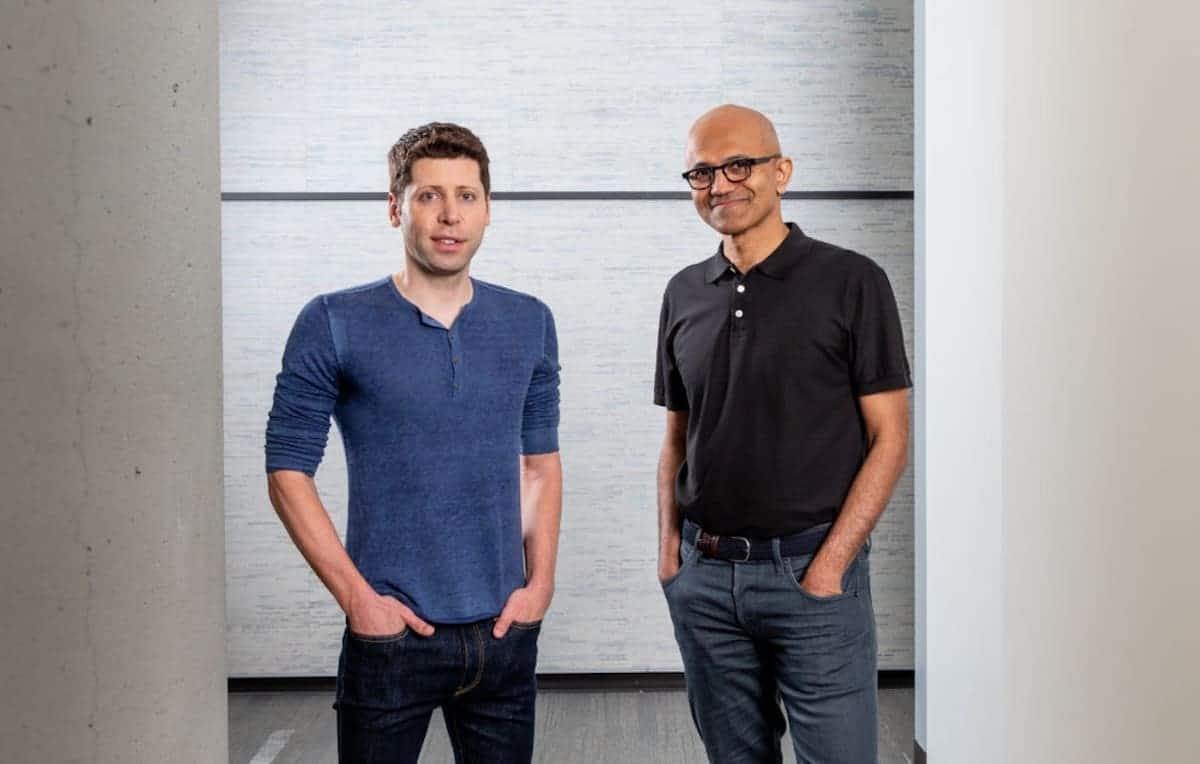The Disagreement That Could Change the Course of AI
The alliance that was recently the most powerful and symbolic in the global tech sector could be blowing up in the coming months. Microsoft and OpenAI, strategic partners in the development and deployment of generative artificial intelligence, are closer than ever to a definitive breakup. The tensions, hidden for months behind institutional declarations of cooperation, have come to light in the form of accusations of anti-competitive practices and veiled threats to break one of the most valuable agreements of the digital era.
At the heart of the controversy, as is often the case in the industry, are power, money, and the ambition to control the future of technology. OpenAI wants to be completely independent, restructure itself as a 100% profit-oriented company, attract new investors, expand its customer base, and prevent Microsoft from “kidnapping” its agenda and access to strategic technologies. Meanwhile, Microsoft seeks to consolidate its preferential access and maintain exclusivity over the OpenAI developments that are already integrated into significant products like Copilot, Bing, or Azure.
The latest known disagreement centers on OpenAI’s acquisition of the startup Windsurf, valued at $3 billion. OpenAI aims to exclude the intellectual property of Windsurf from collaboration with Microsoft, citing direct competition with GitHub Copilot. This move has raised alarms in Redmond, which is unwilling to relinquish the know-how acquired after investing over $13 billion in its partner.
Timeline: From Tech Romance to the Struggle for Supremacy
2015:
OpenAI is founded as a nonprofit organization, with the goal of “democratizing” advanced AI and preventing its monopoly by large tech companies. Among its founders are Elon Musk, Sam Altman, and Greg Brockman.
2016-2018:
Development of the first language models (GPT, GPT-2) and successes in game simulation and robotic control.
2019:
Microsoft invests $1 billion in OpenAI. The collaboration agreement is formalized, and it is agreed that Azure will be OpenAI’s exclusive cloud platform. Microsoft gains priority access to models developed by OpenAI.
2020:
OpenAI launches GPT-3, revolutionizing generative AI. Microsoft integrates it into Power Platform, Office, Bing, and GitHub (through Copilot).
2021-2022:
Microsoft strengthens its investment in OpenAI (more than $10 billion additionally). Azure becomes the “home” of GPT, DALL-E, and Codex models. OpenAI becomes a key player in Azure’s growth and in Satya Nadella’s new “AI-first” strategy.
2023:
OpenAI launches ChatGPT, reaching 500 million weekly active users. Microsoft introduces Copilot and integrates it into Office 365 and Windows. The relationship strains as OpenAI seeks to increase its independence and expand access to its models beyond Microsoft.
2024:
Moves begin to develop their own infrastructures (OpenAI’s ‘Stargate’ project) and Microsoft’s expansion into its own AI models. The first public disagreements about access to intellectual property and collaboration terms emerge.
2025:
The disagreement over Windsurf and OpenAI’s future as a profit-oriented company severely strains the relationship. OpenAI threatens to sue Microsoft for monopolistic practices if it does not agree to reduce its influence. A breakup seems imminent.
Key Milestones and AI Launches by OpenAI and Microsoft (2015-2025)
| Year | OpenAI | Microsoft |
|---|---|---|
| 2015 | OpenAI Foundation | Azure reinforces cloud strategy |
| 2018 | GPT-2 (advanced language model) | Azure Machine Learning, acquisition of GitHub |
| 2019 | Strategic agreement with Microsoft ($1 billion) | Azure: exclusive platform for OpenAI |
| 2020 | GPT-3 (generative AI) | Integration of GPT-3 into Azure and Power Platform |
| 2021 | DALL-E, Codex, Whisper | GitHub Copilot with Codex, further investment in OpenAI |
| 2022 | Launch of DALL-E 2 and ChatGPT | Copilot for Office and Windows |
| 2023 | GPT-4, ChatGPT reaches 500M users/week | Bing Chat with GPT-4, Copilot for the entire suite |
| 2024 | Stargate project (own AI infrastructure) | Development of its own models (Phi-2, Orca) |
| 2025 | Acquisition of Windsurf, push for independence | Tensions over access to technology and IP |
Global Implications: What’s at Stake?
This breakup, beyond being a corporate anecdote, marks a turning point in the race for global leadership in AI. If OpenAI achieves independence, it could open the door to new strategic partners—Google, Amazon, Nvidia—accelerating innovation and global competition. Microsoft, for its part, would lose privileged access to the “brain” of generative AI, forcing it to accelerate the development of its own models and recruit talent from competitors.
On the other hand, the disagreement opens the door to regulatory investigations in the U.S. and Europe regarding monopolistic practices in AI, a key sector for technological sovereignty, industry, and geopolitics. An open conflict would be closely watched by Chinese competitors like Baidu or Tencent, who are betting on alternative AI development models.
Furthermore, the fragmentation of ecosystems could delay interoperability and the democratization of AI, increasing the cost of accessing the best models and complicating integration into public and private platforms.
Who Will Dominate the Future of AI?
The coming weeks will be crucial in defining the future of the collaboration—or potential breakup—between OpenAI and Microsoft. Negotiations may still prevent a definitive split, but the signs point to a “cold war” in technology where each actor seeks to maximize its independence and ability to set the global AI agenda.
In this new scenario, transparency, governance, competition, and technological sovereignty will be central themes for companies, governments, and civil society itself, which observes as a spectator—and sometimes as a user—in the largest corporate battle of the AI era.

